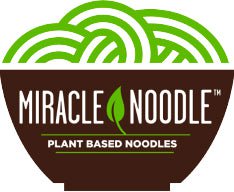Finally, the FDA (Food and Drug Administration) has established standardized gluten free labeling regulations. As of August 5, 2014, the FDA published a final rule for the "Food Allergen Labeling and Consumer Protection Act" better known by what will surely be one of the least repeated acronyms in history, FALCPA. Wouldn't it have been better if the FDA came up with GAS: Gluten and Allergen Standards? Anyhow, what does the new gluten free labeling standards mean? And if you have Celiac Disease, does the regulation go far enough?
Before answering that question, if you purchased gluten free foods over the last few years, you may have not actually been eating a gluten free product. The FDA's lax enforcement of gluten free standards led many food marketers to slap on a gluten free label knowing that the Wild West days of Gluten Free foods would mean little if any chance of being penalized for fraudulently advertising a product as gluten free. The FDA estimates that at least five percent of all foods labeled gluten free have at least 20 parts-per-million of gluten, the threshold that the FDA has decided to enforce.
But keep in mind that a product can still have less than 20 ppm of gluten and still give you food allergy symptoms. Why is that? Blame it on xanthan gum, which is used as a binding agent in many processed foods such as gluten free pretzels. Xanthan gum, and perhaps other binding agents, can produce gluten allergy symptoms even though it is gluten free. (Read this article on Celiac.org for more info on why xanthan gum can complicate your gluten allergy.)
And if you're eating out, does the new 'less than 20 ppm' rule apply to restaurants? The FDA says that restaurants SHOULD adhere to the same standards as food manufacturers, if the restaurant claims it is serving gluten free food, according to a law blog. The law blog suggests that the plaintiff for a consumer who ate at a fraudulently advertised gluten free restaurant will bring the weight of the FDA's ruling down on the restaurant in a court of law. So that's good news for consumers.
But what if you have Celiac's Disease? Does the 'Less than 20 PPM rule' go far enough?
Here's what the FDA's website says about this conundrum for extremely sensitive gluten free dieters:"While the safety assessment results suggest that there may be some individuals with celiac disease who are highly sensitive to gluten exposure even at very low levels, the safety assessment, by its nature, may lead to a conservative, highly uncertain estimation of risk for these individuals. Given the various factors we have to consider and the data available to us, we decline to revise the rule to adopt a safety assessment-based approach at this time."
So, if you're very, very sensitive to gluten, caveat emptor! Let the buyer beware even if a product is labeled with the FDA's new labeling standards. Other things to keep in mind if you're extremely sensitive to gluten or dubious about the new labeling rules: oats are not prohibited from having the "gluten-free" label. The FDA encourages manufacturers “to indicate in their labeling that an oat-derived ingredient is present” if the food uses an oat-derived ingredient and the word “oat” does not appear in the ingredient list (FDA gives the example of beta glucans).
And another vital new labeling standard is that a label will be mis-categorized as gluten-free if the food contains 'wheat' in the ingredients. Always double check with reputable 3rd-party sources to make sure a product is truly gluten free!
Save 15% On Every Miracle Noodle Order! We're always Truly Gluten Free!
Get 15% off every order by enrolling in the Miracle Noodle auto ship program. Choose which products you want delivered and how often. It’s that simple. JOIN TODAY!
P.S. We also have online gift cards!

